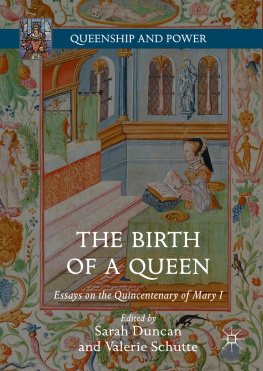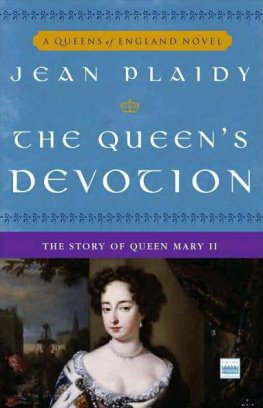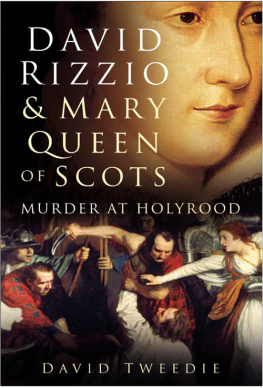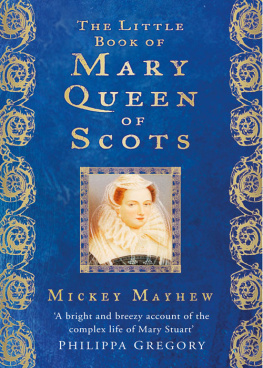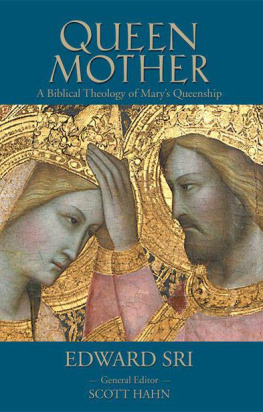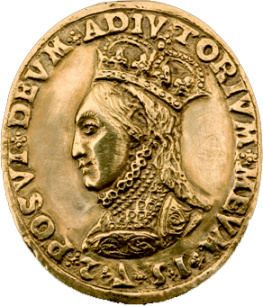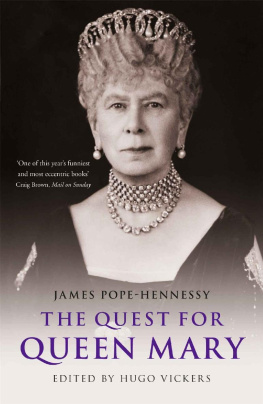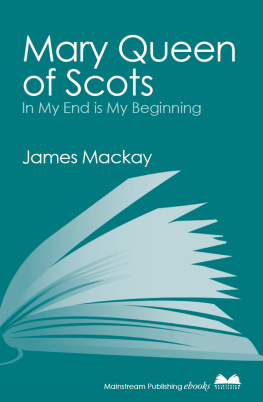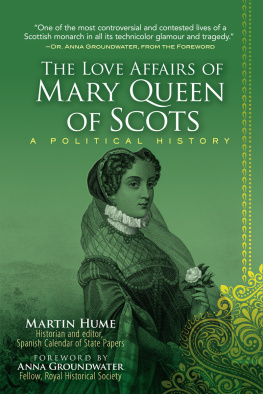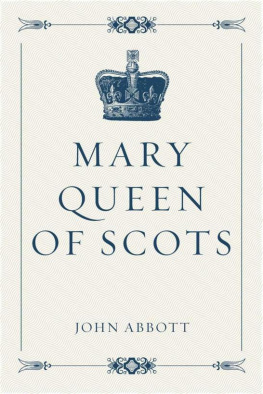1. Introduction: Princess, Bastard, Queen, Villain
Queen Mary I was not born to rule. Although she would later be crowned queen of England on October 1, 1553, her birth on February 18, 1516 to King Henry VIII and his first wife Catherine of Aragon was not greeted with the same lavish celebrations that had been bestowed upon the child, named Henry, who had been born to the royal couple in 1510. Had he lived beyond a few scant months, Henry would not only have been Marys older brother but undisputed heir to the throne. The birth of a healthy daughter was an occasion of joy, to be sure, particularly after the death of little Henry, another short-lived son, and multiple miscarriages, but it did nothing to ensure the succession of the English throne upon the Tudor line, as the oft-quoted comment made by Henry VIIIif it is a girl this time, by Gods grace boys will followbears out.
Marys life, therefore, is marked by a series of liminal momentsoccasions upon which the course of her life turnedand dominated by unforeseen events and fateful occurrences. What if either of her two brothers, born alive, had lived to adulthood? Mary would then have been raised as a typical royal daughter and princess, and in all likelihood, followed the path laid out by Henry VIIIs sisters who were respectively married to the kings of Scotland and France to seal political and dynastic alliances. Instead, Marys life from birth to death followed a much more unpredictable trajectory. With the failure of any more children to be born to Henry and Catherine, Mary was her parents sole surviving child. She was raised in both traditional and nontraditional ways: during her childhood, as a royal princess, she was betrothed to the son of King Francis I of France and later to the future Holy Roman Emperor, Charles V, although both betrothals were eventually broken off. Yet as the sole legitimate heir to the throne, for the first 17 years of her life Mary was raised as such. Although Henry never formally invested her as Princess of Wales, at the age of nine she was sent to the Welsh Marches with her own household and council based at Ludlow Castle. Mary was also well-educated in the humanist tradition, an education that included Latin and grammar tutors such as Giles Duwes and Thomas Linacre, and was overseen by her mother, Catherine of Aragon, who had been the recipient of an excellent education herself at the hands of her mother, Isabel of Spain, queen in her own right.
Marys life took yet another unexpected trajectory when in 1527, unsatisfied with the lack of a son and heir, Henry undertook steps to annul his marriage with Catherine in order to marry a second time, and Mary took her mothers side in the course of their divorce. Marys position as royal princess and sole heir was downgraded after Romes failure to grant Henry an annulment resulted in Henrys willingness to split England from the Roman Catholic Church and his subsequent marriage to Anne Boleyn. As a result, Mary was declared illegitimate and demoted from princess to lady, her household was dissolved, and she was placed in the household of her half-sister, Elizabeth, the only living progeny of Henry and Annes marriage. In 1536, Catherine of Aragons death and Anne Boleyns execution meant that Henry was free to marry a third time, to Jane Seymour, a union that produced one living son and changed Marys life and status once again. Having reconciled with Henry and capitulated to his demand that she submit to his Highness, and to all and singular statutes of this realm,
When her brother ascended the throne as Edward VI in 1547, Marys position altered again. The 1543 Act of Succession and her fathers last will and testament placed her second in line to the throne after Edward. Now a wealthy landed magnate in her own right, Mary was also putative heir to the throne, and by virtue of her Catholic faith, a beacon of hope for Catholics and a focal point of a Catholic opposition during his reign. Still, any expectation that she might become queen was likely quite small. It was only with Edwards sudden death at the age of 15 in 1553 that Marys fortune changed, leading to another, more momentous, transition. What if events had progressed differently and Edward had lived to marry and sire an heir? What if the attempt by Edward and the Duke of Northumberland to change the succession in favor of Lady Jane Grey had succeeded? Fortune favored Mary in the first instance; in the second, she made her own fortune, by taking on the nontraditional role of military leader to make a preemptive strike against the attempted coup and claim her right to the thronethe first Tudor to take up arms to support that claim since her grandfather, Henry VII, had won the Battle of Bosworth Field. Within weeks of Edwards death, Mary rode triumphantly into London as queen.
Marys accession to the throne thrust her into yet another nontraditional role: regnant queen. Mary was the first woman to claim the English crown since Empress Matilda did so in the twelfth century; unlike Matilda, she was the first woman to successfully hold the throne. In the intervening years a number of strong queen consorts had exerted influence over reigning kings, but not until Mary ascended to the throne did a woman have control over the realm in her own right. What if Marys two false pregnancies had resulted in the birth of a living child? This is another liminal moment in Marys lifehad she been succeeded by a Catholic Tudor heir, her reputation as Bloody might not have had the staying power that it has had.
The Birth of English Queenship
This collection of essays on Queen Mary I coincides with the quincentenary of Marys birth in 1516 and seeks both to celebrate the rule of Englands first regnant queen and to contribute to the growing list of works that have begun to rehabilitate and redefine Marys image and reign. It has only been a recent development that historians have focused on Mary as queen in her own right, rather than using her as a foil by which to measure later queens regnant, particularly her sister, Elizabeth I. Offering essays on the life, reign, and reputation of Mary, this volume explores her long road to accession, how she established and maintained her authority, the complexities inherent in her role as female monarch, and the development of her image as queen both during her life and after her death. It adds to the growing number of revisionist works that have only just begun to reevaluate Mary and her reign, thus challenging her enduring and one-dimensional reputation as an unsuccessful ruler, and to contribute to the more nuanced picture of the queen that is emerging and ongoing.
In the last ten years a large number of monographs, essay collections, and articles have been published about Mary I, many of them revisionist in nature, reappraising many aspects of Marys reign. These publications have included five new biographies, a gender politics study, and works examining Marys church and religion. This volume thus complements existing scholarship, and also provides the first collection of essays to examine aspects of Marys life from birth to reign to cultural afterlife and reputation, giving due consideration to the struggles that she faced both before her accession and after it, and celebrating Mary as queen in her own right.
The chapters included in this volume, arranged in roughly chronological order, investigate heretofore unexamined issues in many of the transitional moments in Marys life: from princess to queen; from single queen to married queen to would-be mother; from triumphant queen to her life after death as a bloody villainess. They bring further understanding to the ways in which Mary negotiated her roles as princess, heir, and queen. The first three chapters examine Mary, her childhood, and her transition to ruler. Charles Beem explores Marys role as royal heir in Princess of Wales? Mary Tudor and the History of English Heirs to the Throne (Chap. ) to examine how Mary used her image and wardrobe, from the time she was a princess through the first year of her reign, to control her image, her place in the succession, and her gendered role as queen. Marys dress became one strategy whereby she justified her right to be queen and took an active role in her transition from princess to ruling queen.

